Question My 14 year daughter has started showing rabbits for 4H and at rabbit shows. We purchased a very nice doe and buck for showing and breeding. Our doe had her first litter 10 days ago, she had 8 babies. All are doing fine, but I was wondering why two of them have a lot of black on them. One has black ears and legs the other just has black ears. Both the buck and doe are pedigreed and have won best of breed and
best opposite at various shows. Is this something that happens in the red satin rabbits or did we purchase sub standard rabbits? The other 6 babies are a beautiful red satin color. Thank you
AnswerThose would be tortoiseshell (tort) coloured babies. All it means is that both parents carry the self gene. Tort is not a showable colour, so those babies are not good for anything other than breeding or pets. Though unless they are pretty much perfect otherwise, I'd sell them as pets rather than breeding stock, to avoid more tort babies, unless you want some siamese babies; tort can be crossed with siamese, as siamese is just a shaded version of tort. Then if you only keep the siamese babies, they will not carry tort so cannot produce more tort babies unless bred back to something other than siamese, californian, or white (which are the three showable colours that siamese should normally be bred to).
By breeding those two, you will probably always end up with a few tort babies. Statistically speaking, you should get around 1/4 torts and 3/4 red. Each litter may be a little different, but the overall percentage should work out to be around there. 1/2 of the reds should carry tort as well, and 1/4 should be pure for the red colour. Of course, you can't know which are which until you breed them.
Rabbits carrying unshowable colours, especially in the breeds with several colours (like satins), is not uncommon at all. It's just something most breeders deal with. A few very carefully breed their herd so that there are no unwanted colour genes, but most don't go to that trouble unless it becomes a real problem in their herd.

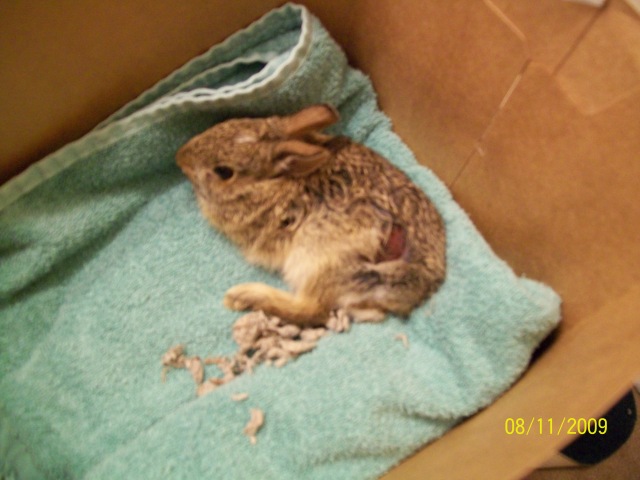 Orphaned and hurt
QuestionQUESTION: Hi i have 3 outside labs and by natur
Orphaned and hurt
QuestionQUESTION: Hi i have 3 outside labs and by natur
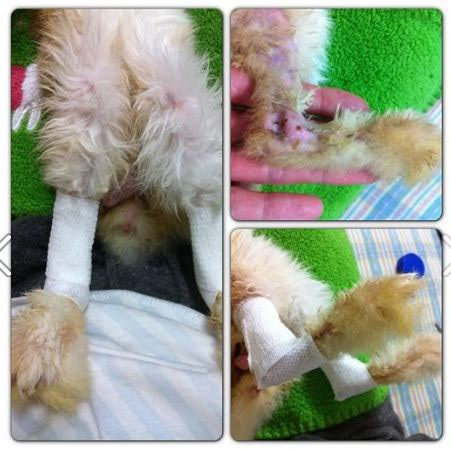 15 years old rabbit
Question
Oimo
Hi, I am asking for a japanese fri
15 years old rabbit
Question
Oimo
Hi, I am asking for a japanese fri
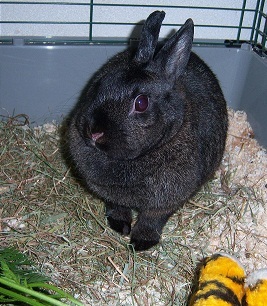 loud noises from bunny, suspected gas
Question
Vijfje
Dear Dana,
Since you helped save my bu
loud noises from bunny, suspected gas
Question
Vijfje
Dear Dana,
Since you helped save my bu
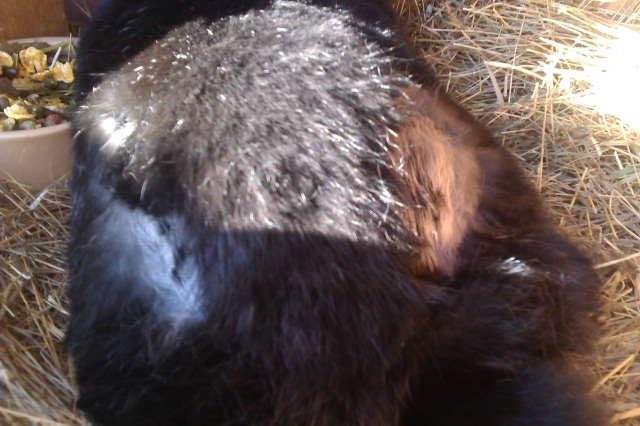 Rabbit pulling out fur
Question
bald patches
Hi,
Recently ive noticed
Rabbit pulling out fur
Question
bald patches
Hi,
Recently ive noticed
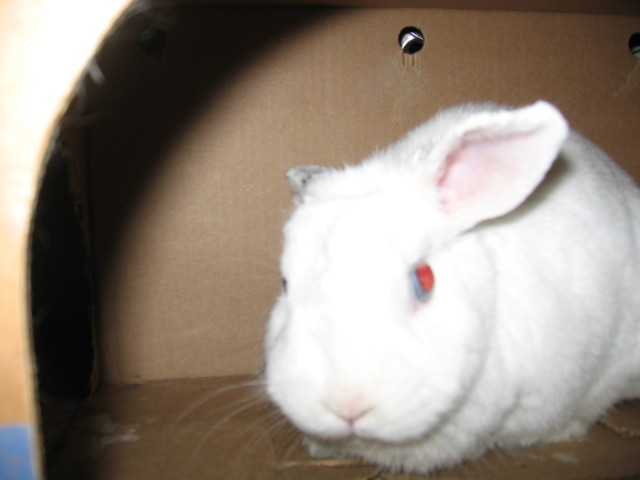 Rabbt developing the flopsies
Question
Patty the rabbit
Hello!
My 7y.o. female rough
Rabbt developing the flopsies
Question
Patty the rabbit
Hello!
My 7y.o. female rough